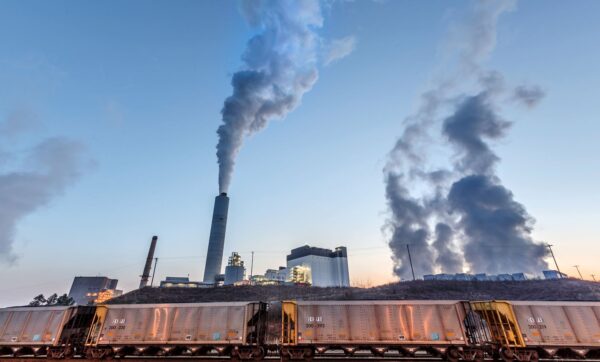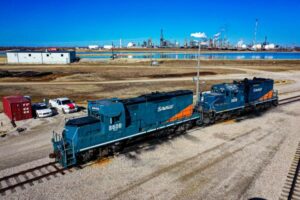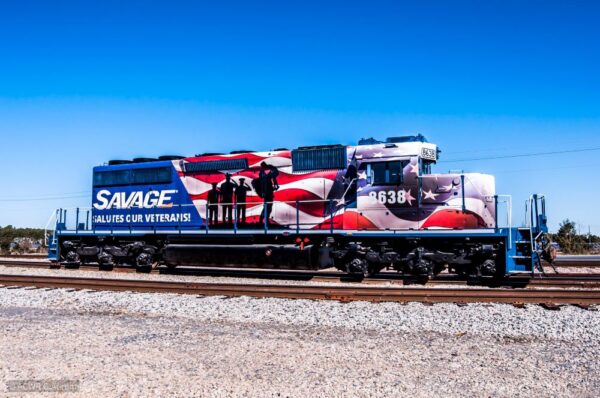
The Right Supply Chain Partner Can Help Reduce Carbon Emissions
When evaluating supply chain partners, several factors contribute to a successful partnership. These include efficiency, reliability, costs, safety, and sustainability. These factors expand beyond the traditional view of “results.” They answer the question of how to achieve those results.
Savage works to create such a relationship with its partners. This is because we know that how a business operates becomes as important as what it achieves.
The Big Picture
Environmental sustainability is becoming more important to industrial success. Industrial companies, and their supply chain partners that wish to excel in this effort, should:
- Develop supply chain strategies that include sustainability as a key objective;
- Adopt safe, efficient, and sustainable practices that include clear objectives to reduce environmental impact; and
- Create solutions that change the traditional supply chain, like using intermodal transloading to reduce truck miles.
Sustainability starts with one company’s actions, and gains momentum as their supply chain partners work together. It’s possible for companies to grow, and improve our lives, without compromising the planet to do so.
A Strategy for Sustainability is a Blueprint to Reduce Carbon Emissions
Savage works with Customers to move and manage the products that power our lives. Often these products have an environmental impact. That impact is often lessened when reducing carbon emissions defines the strategy. With that clear goal in mind, we then explore more sustainable ways to move products. The resulting supply chain strategy is often a more efficient and sustainable solution. Additionally, it is customized to the Customer’s needs and objectives.
There are a few things to consider with this approach:
- Clarifying what’s important up front can have a major impact on the designed solution
- Often a sustainable solution includes a trade-off. Partners must reconcile between up-front capital costs and on-going operating costs
- Where and how products are moved may change in a sustainable supply chain solution. These changes deserve consideration.
- Technologies can play an important role in sustainable progress
Intermodal Transloading Challenges the Traditional Supply Chain
To create an effective solution to reduce carbon emissions, it’s important to understand where emissions come from. The Greenhouse Gas Protocol, outlines two broad emission categories:
- Direct emissions: Emissions from sources owned or controlled by the company or entity. Examples include vehicle exhaust or factory output. These are a company’s scope 1 emissions.
- Indirect emissions: Emissions from activities upstream and downstream of the company or entity. Examples include utilities, transportation and distribution and end of live treatment of products. These are a company’s scope 2 and 3 emissions. Supply chain activity generally falls into scope 3 emissions.
Supply chain emissions present a complex puzzle for many companies. They don’t directly control those emissions, but are often held accountable for their effects. A creative supply chain partner can help. For those who have only relied on truck transportation, there’s another way. Consider the benefits of intermodal transloading:
- A single railcar can hold the load of four trucks, a typical train includes 80-120 railcars.
- Railcar innovations are changing what is traditionally carried in a railcar. They can also influence how products transition from rail to truck. This cuts down the amount of first- and last-mile inefficiencies.
- Ultra-low emission Tier-3 locomotives are becoming more common. They help to further improve competitiveness to reduce carbon emissions.
Savage maintains over 50 transload railports in North America. Each is designed to move and manage products to their end markets safely, and sustainably. These operations efficiently integrate rail, trucks, and maritime vessels to facilitate first- and last-mile movements between rail.
Experts Help Make Environmental Sustainability Achievable
For Customers that operate in industrial markets, the conversation around how to reduce carbon emissions may seem overwhelming and unending. Creative supply chain solutions with the right tools, processes, and personnel, however, can turn this challenge into a winning capability and competitive advantage.
Working alongside Savage, our Customers and Partners have access to kinds of services and expertise that make environmental sustainability achievable. Some of these include:
- Facility and supply chain design
- Facility and supply chain engineering, procurement, and construction
- Facility operations and maintenance
- Rail, trucking, and marine services
Customers can make use of Savage’s expertise for any of these separate services, as needed. Intermodal transloading brings them all together in a unified package. It can be one of the drivers to create a more sustainable supply chain.
To learn more about how you can partner with Savage to help your supply chain move more efficiently and reduce carbon emissions, contact us today.



